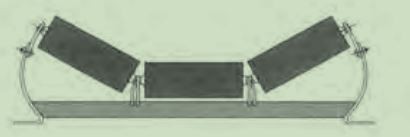 Afrikaans
Afrikaans  Albanian
Albanian  Amharic
Amharic  Arabic
Arabic  Armenian
Armenian  Azerbaijani
Azerbaijani  Basque
Basque  Belarusian
Belarusian  Bengali
Bengali  Bosnian
Bosnian  Bulgarian
Bulgarian  Catalan
Catalan  Cebuano
Cebuano  Corsican
Corsican  Croatian
Croatian  Czech
Czech  Danish
Danish  Dutch
Dutch  English
English  Esperanto
Esperanto  Estonian
Estonian  Finnish
Finnish  French
French  Frisian
Frisian  Galician
Galician  Georgian
Georgian  German
German  Greek
Greek  Gujarati
Gujarati  Haitian Creole
Haitian Creole  hausa
hausa  hawaiian
hawaiian  Hebrew
Hebrew  Hindi
Hindi  Miao
Miao  Hungarian
Hungarian  Icelandic
Icelandic  igbo
igbo  Indonesian
Indonesian  irish
irish  Italian
Italian  Japanese
Japanese  Javanese
Javanese  Kannada
Kannada  kazakh
kazakh  Khmer
Khmer  Rwandese
Rwandese  Korean
Korean  Kurdish
Kurdish  Kyrgyz
Kyrgyz  Lao
Lao  Latin
Latin  Latvian
Latvian  Lithuanian
Lithuanian  Luxembourgish
Luxembourgish  Macedonian
Macedonian  Malgashi
Malgashi  Malay
Malay  Malayalam
Malayalam  Maltese
Maltese  Maori
Maori  Marathi
Marathi  Mongolian
Mongolian  Myanmar
Myanmar  Nepali
Nepali  Norwegian
Norwegian  Norwegian
Norwegian  Occitan
Occitan  Pashto
Pashto  Persian
Persian  Polish
Polish  Portuguese
Portuguese  Punjabi
Punjabi  Romanian
Romanian  Russian
Russian  Samoan
Samoan  Scottish Gaelic
Scottish Gaelic  Serbian
Serbian  Sesotho
Sesotho  Shona
Shona  Sindhi
Sindhi  Sinhala
Sinhala  Slovak
Slovak  Slovenian
Slovenian  Somali
Somali  Spanish
Spanish  Sundanese
Sundanese  Swahili
Swahili  Swedish
Swedish  Tagalog
Tagalog  Tajik
Tajik  Tamil
Tamil  Tatar
Tatar  Telugu
Telugu  Thai
Thai  Turkish
Turkish  Turkmen
Turkmen  Ukrainian
Ukrainian  Urdu
Urdu  Uighur
Uighur  Uzbek
Uzbek  Vietnamese
Vietnamese  Welsh
Welsh  Bantu
Bantu  Yiddish
Yiddish  Yoruba
Yoruba  Zulu
Zulu Effective Conveyor Solutions with High-Performance Carrying Rollers for Efficient Material Handling Systems
The Importance of Conveyor Carrying Rollers in Material Handling Systems
In the modern industrial landscape, efficiency and reliability are key components of successful logistics and material handling systems. One pivotal element in these systems is the conveyor carrying roller. These rollers play an essential role in transporting a wide range of materials, from heavy machinery parts to lightweight packages, across various industries.
What Are Conveyor Carrying Rollers?
Conveyor carrying rollers are cylindrical components that support and guide the conveyor belts used in material handling systems. They are typically made from durable materials such as steel, aluminum, or plastic, designed to withstand the weight and impact of the material being transported. These rollers are positioned beneath the conveyor belt and serve multiple purposes, including load support, facilitating movement, and reducing friction.
How Do Conveyor Carrying Rollers Work?
The primary function of carrying rollers is to provide a stable surface for the conveyor belt to roll over. When materials are placed on the conveyor belt, the weight is evenly distributed across the rollers. This design minimizes wear and tear on the belt while ensuring that the materials are moved smoothly and efficiently. As the conveyor belt moves, the carrying rollers rotate, providing the necessary movement to transport goods from one point to another.
Moreover, the use of carrying rollers contributes significantly to reducing operational costs. By minimizing the friction between the belt and the rollers, these components help to decrease energy consumption, making the entire system more efficient. This efficiency not only leads to lower utility bills but also extends the lifespan of both the conveyor belt and the carrying rollers themselves.
conveyor carrying roller

Types of Conveyor Carrying Rollers
There are several types of conveyor carrying rollers, each suited for specific applications. For instance, plain rollers, which have a smooth surface, are commonly employed for general-purpose conveying tasks. In contrast, rubber-coated rollers can provide additional grip and are advantageous in applications where slipping might occur.
Another variant is the troughing roller, which has a groove design that creates a U shape. This design is particularly useful for transporting bulk materials like grains or powders, as it helps to contain the load and prevent spillage. Additionally, there are also impact rollers designed to absorb shocks during the loading of heavy materials, thus protecting the conveyor system from damage.
Maintenance of Conveyor Carrying Rollers
To ensure the longevity and functionality of conveyor carrying rollers, regular maintenance is crucial. This typically involves inspecting the rollers for wear and tear, cleaning them to prevent the buildup of debris, and lubricating the bearings for smooth operation. Implementing a proactive maintenance schedule can prevent costly downtimes and repairs, keeping the material handling systems operating at peak performance.
Conclusion
Conveyor carrying rollers are indispensable components in the material handling industry, enhancing the efficiency and effectiveness of transporting materials. Their design not only aids in load support and movement but also contributes to the overall sustainability of operations by reducing energy consumption. As industries continue to evolve towards more automated and efficient processes, the role of conveyor carrying rollers will remain vital. Companies that invest in high-quality rollers and regular maintenance will likely see increased productivity and reduced operational costs, highlighting the importance of these seemingly simple devices in the complex world of material handling.
-
Revolutionizing Conveyor Reliability with Advanced Rubber Lagging PulleysNewsJul.22,2025
-
Powering Precision and Durability with Expert Manufacturers of Conveyor ComponentsNewsJul.22,2025
-
Optimizing Conveyor Systems with Advanced Conveyor AccessoriesNewsJul.22,2025
-
Maximize Conveyor Efficiency with Quality Conveyor Idler PulleysNewsJul.22,2025
-
Future-Proof Your Conveyor System with High-Performance Polyurethane RollerNewsJul.22,2025
-
Driving Efficiency Forward with Quality Idlers and RollersNewsJul.22,2025





























